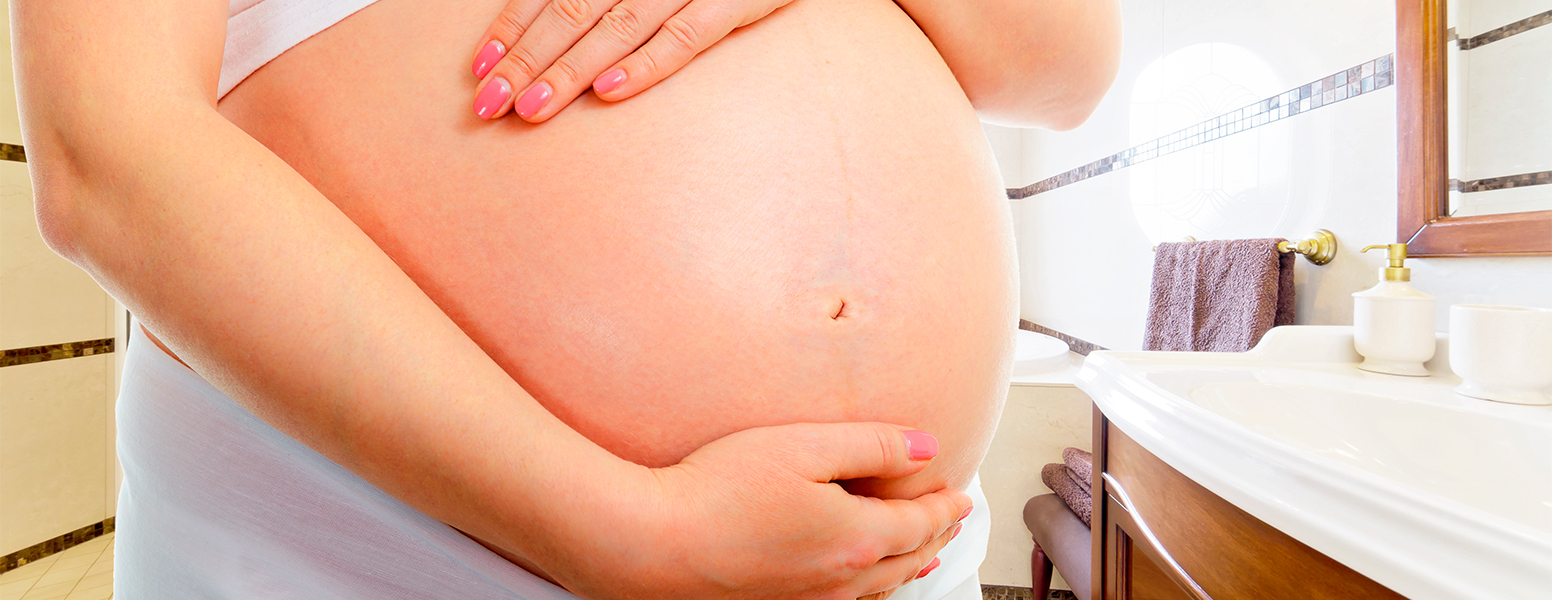Light urinary incontinence during pregnancy may be the result of many factors.
Certain women are genetically predisposed, while others are not. Race and age may also constitute contributing factors. It is known that smoking also contributes to the onset of light incontinence. Conditions of the lungs, such as asthma and chronic cough, may also weaken the pelvic floor, due to the constant pressure. Whatever increases pressure on the pelvis may contribute to the undesirable symptoms of urinary incontinence.
In addition, the weight of the growing uterus that exerts pressure on the bladder may be a factor that leads to urine leakage during pregnancy. When light incontinence predates the pregnancy, it may be exacerbated during gestation or persist following labour.
Light incontinence is the result of the relaxation of the pelvic floor muscles, of stretching or trauma to the nerves of the pelvis that feed the muscles.
The baby’s size in relation to the size of the pelvis may be an additional factor. The time spent pushing during labour may also contribute to urinary incontinence.
Some help may be required during a normal birth. If the future mother is exhausted or there are problems with the foetus’ cardiac rhythm, the doctor may decide to expedite the exit of the baby. The use of forceps, for example, slightly increases the possibility of urinary incontinence.
Advice:
What can you do during pregnancy to prevent light urinary incontinence?
- Start with quitting smoking (especially during pregnancy) to control coughing and sneezing.
- Exercise to strengthen the pelvic floor – Kegel exercises.
Exercising the muscles of the pelvic floor may help women who experience light incontinence – especially for stress or urge incontinence, the two most common types. When performed under the guidance of a special exercise plan that will help women to understand and maximize the benefits from this type of exercise, they are particularly useful. Kegel exercises do not cure incontinence but often offer relief from symptoms, significantly increasing the time between visits to the toilet.
Kegel exercises may be done safely during pregnancy. They present no danger to the pregnancy or the mother. Of course, this does not mean that you should not ask for your doctor’s agreement before you start any form of exercise during pregnancy. - Watch the increase of your body weight during pregnancy. Of course, pregnancy is not a good time to start a diet. It is very important, however, that you eat well and manage your weight. If your history in that sense is poor, you may find it useful to work with a dietician who will advise you on healthy eating and will teach you how to control your weight. When a woman’s weight exceeds a certain limit, it may have a negative impact on the health of the pelvic floor and increase the possibility of the appearance of urinary incontinence symptoms.
The dilemma faced by certain women:
Vaginal births are linked more closely with urinary incontinence. This is why certain future mothers opt for a caesarean. You should know, however, that, according to medical data, the possibility of urinary incontinence does not justify a caesarean, as any surgery (like caesareans) is dangerous. We do not, therefore, recommend that you opt for surgery solely as a means of preventing urinary incontinence. Your gynaecologist is the only competent person to decide if you will need a caesarean, depending on the circumstances of each impending labour.
Sani post-partum sanitary pads and urinary incontinence pads have been designed based on the Sensitive Concept, which combines maximum absorbency, safety and and skin friendly protection.
Kindly contributed by Urologist – Andrologist Surgeon, Dr Charalambos P. Asvestis





